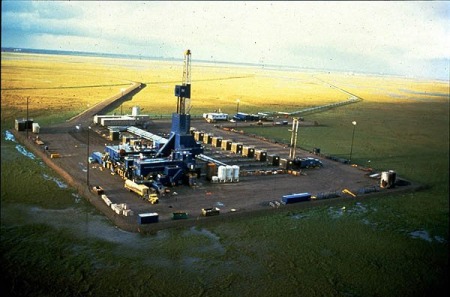Should We Drill in ANWR?
What are the Benefits of the Habitat ANWR's Provides?

The Artic National Wildlife Refuge (ANWR) consists of 19,286,482 acres in the Alaska North Slope region. It is the largest National Wildlife Refuge in the nation, and supports the largest variety of plant and animal life in the Artic Circle ranging from polar bears to foxes to ducks. Barrier islands, coastal lagoons, salt marshes, and river deltas provide habitat for migratory water birds such as sea ducks, geese, swans, and shorebirds. The coastal waters house fish such as dolly varden and arctic cisco. The solid land masses and the sea ice are invaluable to caribou giving birth and raising their young during the summer and by polar bears hunting seals and giving birth in snow dens during the winter seasons. Indeed, the list of beneficial impacts that ANWR has on the various species it houses are limitless.
The primary purpose of ANWR since its conception in 1960 was to conserve the natural diversity of wildlife and fish populations within their natural habitats. To ensure an enduring habitat, the Alaska National Interest Land Conservation Act (ANILCA) banned development within ANWR's borders. When ANILCA was signed in 1980, Section 1002 of the act set aside 600,000 ha of the 1,000,000 ha coastal plain of ANWR for evaluating potential oil and gas resources. However, according to Thomas R McCabe in his article Assessing Values of Arctic Wildlife and Habitat Subject to Potential Petroleum Development, section 1002 also mandated that a comprehensive inventory and assessment of the fish and wildlife resources and an analysis of the impacts of petroleum exploration, development, and production on the coastal plain of ANWR be conducted (32, McCabe). Plainly stated, ANWR is meant to be a safehaven for wildlife in which some of our nation’s most precious animals can live in safety and peace.
Drilling for oil was never an intended aspect of ANWR, evident by the ban of all things man-made. As we will show, drilling for oil in ANWR is not only futile, because it offers an insufficient solution to an ongoing problem (dependence on oil), but also it creates irreparable damage to ANWR's wildlife and ecosystem.
.
The primary purpose of ANWR since its conception in 1960 was to conserve the natural diversity of wildlife and fish populations within their natural habitats. To ensure an enduring habitat, the Alaska National Interest Land Conservation Act (ANILCA) banned development within ANWR's borders. When ANILCA was signed in 1980, Section 1002 of the act set aside 600,000 ha of the 1,000,000 ha coastal plain of ANWR for evaluating potential oil and gas resources. However, according to Thomas R McCabe in his article Assessing Values of Arctic Wildlife and Habitat Subject to Potential Petroleum Development, section 1002 also mandated that a comprehensive inventory and assessment of the fish and wildlife resources and an analysis of the impacts of petroleum exploration, development, and production on the coastal plain of ANWR be conducted (32, McCabe). Plainly stated, ANWR is meant to be a safehaven for wildlife in which some of our nation’s most precious animals can live in safety and peace.
Drilling for oil was never an intended aspect of ANWR, evident by the ban of all things man-made. As we will show, drilling for oil in ANWR is not only futile, because it offers an insufficient solution to an ongoing problem (dependence on oil), but also it creates irreparable damage to ANWR's wildlife and ecosystem.
.
